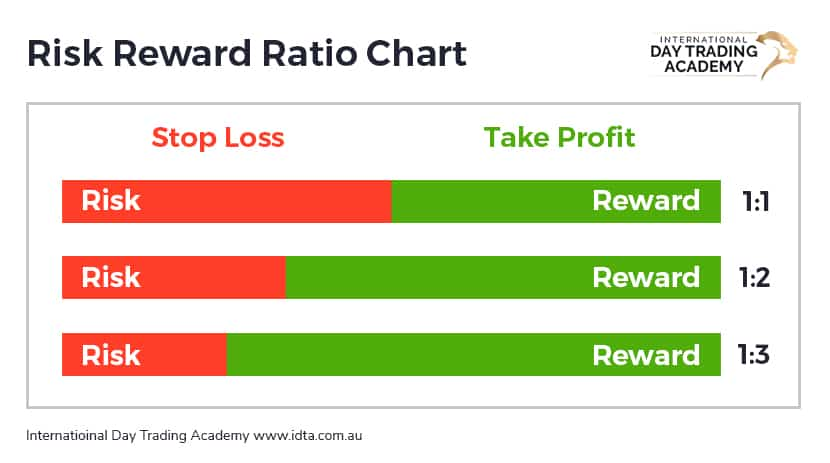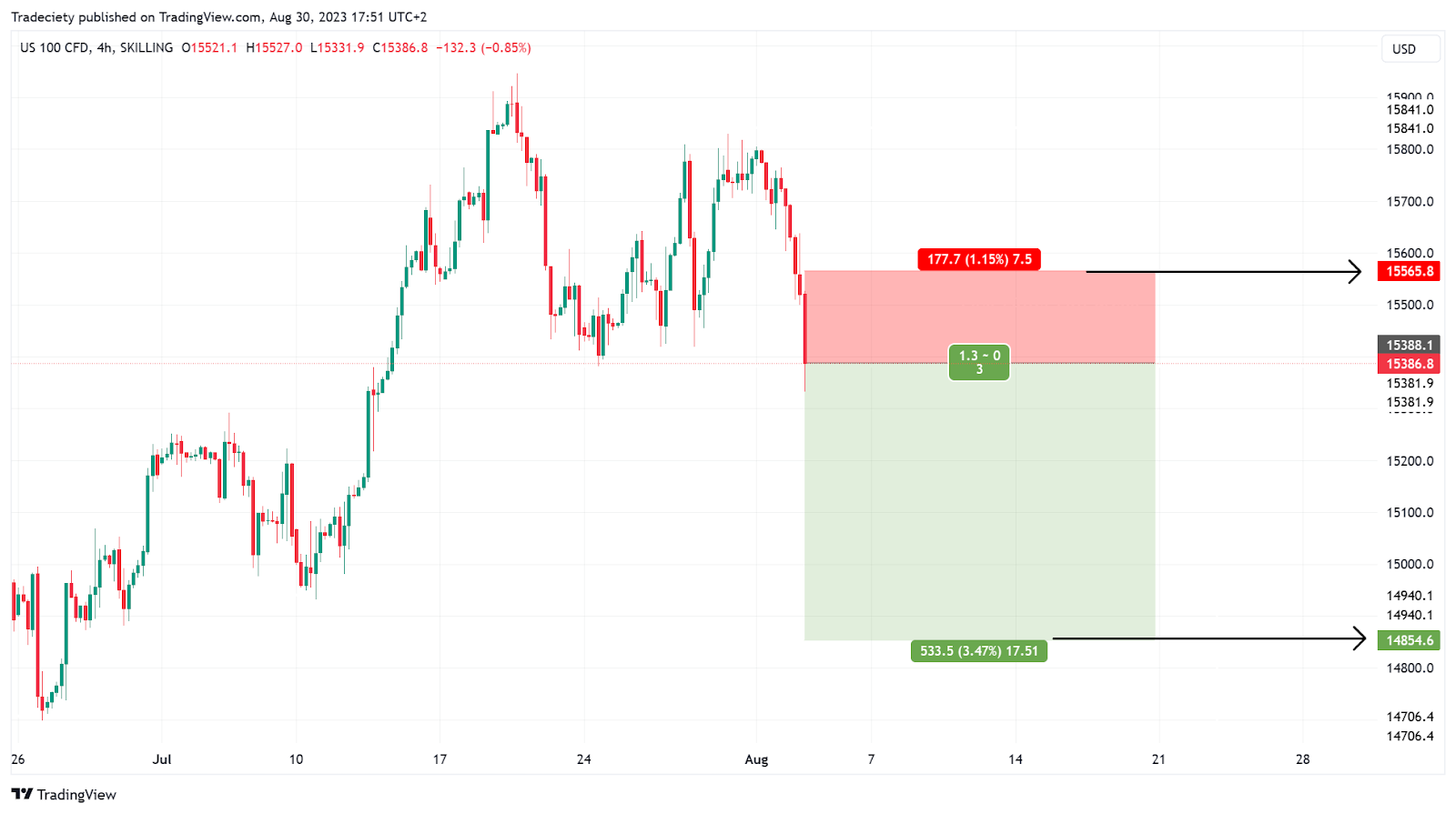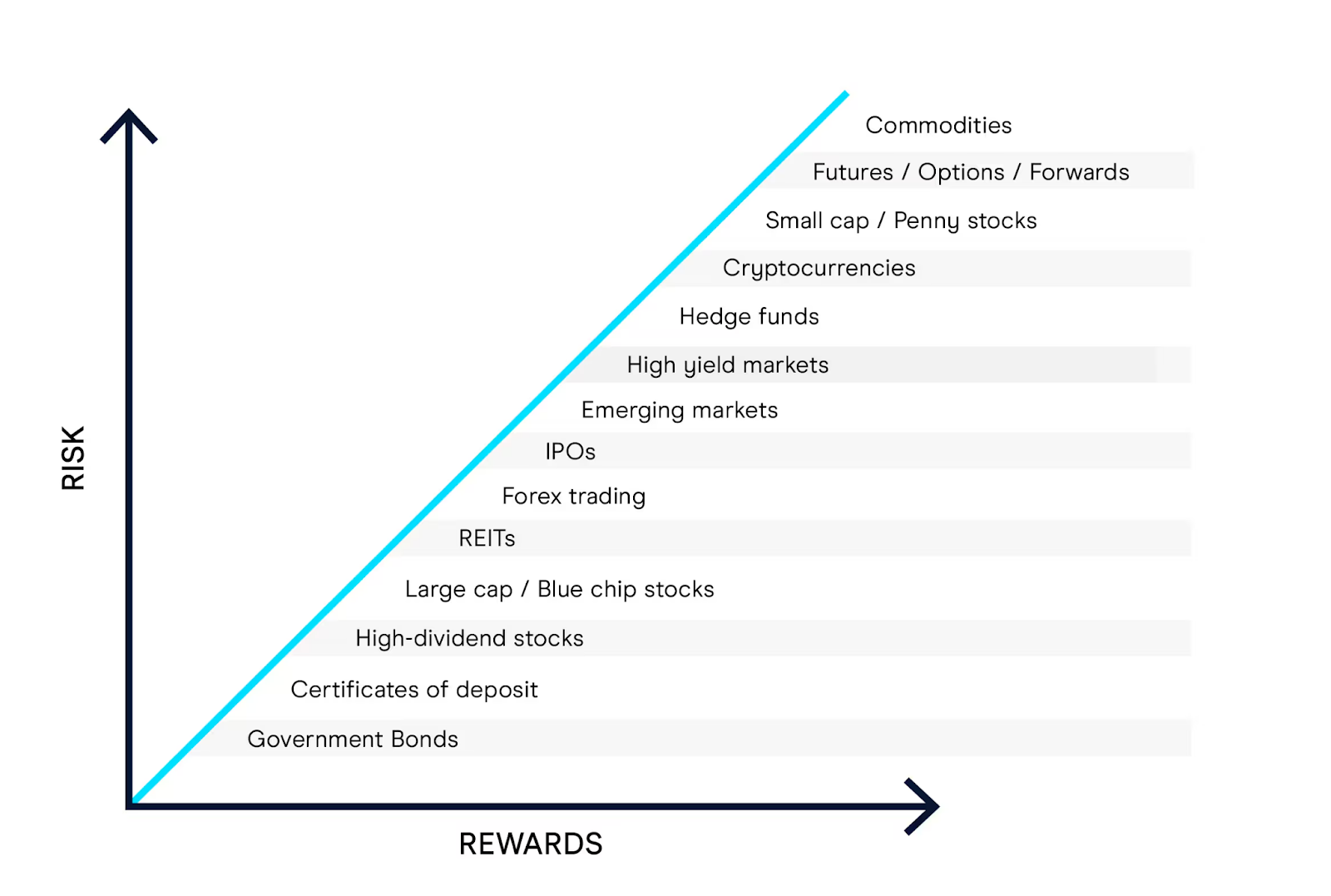
Share

Related articles
Author
Constantine Blake
As for trading, it is possible to get caught up with charts, indicators, and noise in the market. However, veteran traders are aware that victory is not about taking all trades and trading with reckless abandon. That is when a 1:2 risk-reward ratio outshines all else. This golden yet simple principle can make all the difference between breaking even and achieving consistent income.
Risk-reward ratio (more frequently shortened to R:R or simply R/R) is a fundamental measure any trader should learn and adhere to at all times. Essentially, it is the potential loss of a trade compared to a possible profit. It is expressed in a 1:2 sort of statement, whereby you are willing to risk losing $1 to gain a potential $2.

This is a critically important principle for strategic trading because it encourages traders to look beyond their own win rates. You can lose more trades than you win but still end up with a profit if your risk-to-reward is very good. For example, with a 1:2 risk-to-reward ratio, you only have to win 34% of trades to break even. Anything above that creates profit, all else equal and with discipline.

Experienced traders don’t trade based on technical patterns or indicators; it is reward-to-risk situations all the way. A great setup with a lousy risk-reward is often a pass. Why? Because it is not whether you are right — it is all about managing risk so you can survive when you are wrong and still be a player.

To successfully enter trades, you need to know how to work out the risk-reward ratio. The formula itself is very simple: Risk-Reward Ratio = Potential Reward ÷ Potential Risk. More specifically, it can be expressed thus:

(Target Price – Entry Price) ÷ (Entry Price – Stop-Loss Price)
For long trades, reward is the distance from your target price to entry, and risk is from stop-loss to entry. For short trades, when you profit from falling prices, you flip the calculation — reward is entry to target and risk is stop-loss to the entry position.
We'll illustrate this through examples.
Pretend you're buying long on a stock priced at $100. You're taking a take-profit at $110 and a stop-loss at $95. There, you're risking $5 (reducing from $100 to $95) to make a potential profit of $10 (increasing from $100 to $110). That gives you a risk-reward ratio of $10 ÷ $5 = 2, or 1:2. For every unit you risk, you're hoping to win two.
Now take a small trade. Go long at $150, with a stop at $155, and try to take profits at $135. Here, you risk $5 (between $150 and $155), and you can make a profit of $15 (between $ 135 and $ 150). This provides you with a 3:1 risk-reward ratio ($15 ÷ $5), or 3, which means you can potentially triple your risk if the trade is working for you.
Just like with plain price levels alone, however, this ratio gains further potency when married to your capital management. Suppose you're trading with a $10,000 account and risk 2% per trade — that's $200.
On a 1:2 risk-reward setting, your risk-adjusted return potential on that trade would be $400. This systematized process of managing risk is designed to keep losses in check while allowing winners to run long enough to achieve steady, long-term growth.
The greatest fallacy involved with trading is believing you need to win most trades to profit. The reality is, with a 1:2 risk-reward ratio, you can win out when you only win 40% of trades. That's because winners outweigh losers to create a net positive result over a series of trades.
Employing a 1:2 risk-reward ratio as a trading methodology is not merely a matter of plugging numbers into variables — it is a systematized and disciplined process for making informed decisions. The ratio must dictate trade entries and trade exits and how you approach risk, capital allocation, and odds with time. That is how to apply it effectively.
Every trade has to have a clear plan to execute successfully. Once you identify your point to enter using technical or fundamental analysis, you have to identify your stop-loss to control downside risk.
You'll exit the trade if it goes against you at this level. Your take-profit is to be located at least twice as far away from the entry as is your stop-loss.
For instance, if you are risking 50 pips, you'd like to aim 100 pips further out. This minor adjustment always has you reaching for trades with at least a 1:2 risk-reward ratio.
Stop-loss and take-profit levels must be based upon objective marketplace configuration — guesswork is unacceptable. Set stop-losses below support areas or above resistance when shorting.
Similarly, find take-profit areas using tools like Fibonacci extensions, previous highs/lows, or major psychological price levels. This approach gives your trade a higher chance of being profitable while avoiding early stop-outs by market noise.
Not all setups are worth going into. It is o.k. to pass if a potential trade is not at least twice as profitable as it is risky. Even when it looks like a "sure thing," going into trades with weak risk-reward set-ups will grind away at your edge over time.
Patience and discipline are key — at times it's best to wait for the price to pull back or move further up/down and enter, allowing the ratio to improve naturally.
Your risk-to-reward ratio has to align with money management. Determine how much you're willing to risk per trade — generally 1–2% of your account — and adjust your position size accordingly based on the distance from your entry to your stop-loss.
For instance, if you have an account worth $10,000, you're risking $200 and your stop-loss is 20 pips from you, your position size must make each pip worth $10. This avoids over-exposure and provides constant capital preservation.
The 1:2 ratio is extremely effective when paired with a high-probability trade style. Whichever type you're trading — price action set-ups like pin bars and engulfing bars, breakouts, or trends — you want to find technically strong and mathematically likely trades.
Win Rate
Risk-Reward (1:2)
Net Outcome (per 10 trades, risking $100)
30%
1:2
3 wins = +$600, 7 losses = -$700 → -$100
40%
1:2
4 wins = +$800, 6 losses = -$600 → +$200
50%
1:2
5 wins = +$1,000, 5 losses = -$500 → +$500
High-probability entries increase your win proportion, and the 1:2 ratio makes each gain significantly larger than any loss — increasing profitability with time.
To refine your execution of the 1:2 strategy further, maintain an accurate trading journal. Write down all points of entry and exit, stop-loss and take-profit points, actual outcomes, and risk-reward ratio per trade.
As it accumulates over time, this data displays patterns, indicating whether your configurations are consistent with the ratio, and enables you to identify areas for improvement. These are traders who perform significantly better — and consistently — when monitored compared to those who trade blindly.
Being disciplined all the way through the trade is the hardest part about trading a 1:2 ratio. Many traders close early at the first signs of profits and fear a reversal. Closing early, however, robs you of the full reward and gets in the way of math-to-strategy.
Trust the analysis, let things breathe, and don't interfere. Accept losses at regular intervals, and don't forget the 1:2 structure shifts odds to you for a big enough sample size.
Even with risk-reward being one of a trader's most valuable tools, it can lead to misplaced confidence and losses when overused or misunderstood.
These are the most common mistakes traders make when employing the risk-reward ratio — and how to avoid them.
Most popular is the myth that a 1:2 risk-reward setup is always profitable. As desirable as math appears with a risk-reward ratio calculator, it doesn't account for how often trades meet their goals. For example, a 1:2 ratio trade with 10% odds of success does badly over time.
To determine whether a setup is truly worthwhile, experienced traders balance out the ratio using statistical metrics, such as their win rate, which is generally tracked by a win percentage calculator. The intersection point for desirable reward-to-risk and achievable chance determines a risk-adjusted gain worth pursuing.
Some traders are guilty of distorting their setups to suit a 1:2 ratio on paper. This can consist of an unconscionably tight stop-loss or a stretched take-profit beyond the market structure, causing the setup to seem attractive based on the risk-reward ratio formula but flawed in practice.
Rather than attempting to dictate math, practice sound risk management principles with forex trading and allow price action to determine your stop-loss and target locations. Unless the ratio develops naturally to satisfy your requirements, abandon the trade or wait for better points of entry.
Using static stop-losses and targets regardless of prevailing volatility can destroy your entire system. For instance, using a 50-pip stop during minimal volatility and expecting to witness a 100-pip move is unreasonable.
Use metrics like the Average True Range (ATR) to adjust your stop-loss and take-profit points dynamically. This makes your risk management approach applicable to present situations and optimizes your total return per trade.
This is a standard and expensive error based on gut instinct or by using rounding numbers when setting stop-losses. It tends to cause being stopped out too soon, ruining your trade return calculator metrics and distorting your overall approach.
Instead, stop-losses are based on sound technical reasoning—like swing high/low points or areas of support and resistance. As long as you respect those, your minimum rate of return improves over time, and your risk-to-reward is always properly constructed.
Many traders lose their cool when a position enters profit and close out far too early, contradicting the entire 1:2 ratio principle. What may initially seem like taking earnings, by doing this can throw off your risk-adjusted return and net you a lower total return.
If you've worked out your trade correctly with a trade return calculator and set up your levels with a risk-reward ratio formula, follow through with it. Permitting winners to run makes 1:2 work with an array of trades.
Though fixed rules are necessary to ensure consistency, being rigid and inflexible during a trade can hurt performance. Position adjustments like adjusting your stop to breakeven or downsizing at key levels can save capital and work to your advantage—provided these are part of a substantiated risk management program.
On the other hand, freestyle investing with minimal guidance leads to sporadic returns and investment decisions based on emotions.
A 1:2 ratio can seem extremely enticing on paper, but leverage can still result in significant losses when it is overdone. Even when there are positive readings from a risk-reward ratio calculator, over-exposure increases drawdown risks during losing streaks.
Stick to safe forex trading risk management techniques by risking 1–2% at most of your account per trade. Following these limits means that, regardless of how enticing your risk-reward setting may be, it never leads to unsustainable losses.
The 1:2 risk-reward ratio is by no means a silver bullet — but it comes close. Combine it with smart strategy, relevant execution, and control over emotions, and you have one integral foundation to trading profitability.
Instead of running with every market direction change, you're deliberate, precise, and masterful. That's the difference between a pro trader and a gambler. Begin employing the 1:2 ratio by design, and you'll set the odds solidly to your advantage.
Start to optimise your trades with smart risk-reward set-ups at Atmexx — and put yourself on the path to more frequent, intentional profits.
What is a 1:2 risk-reward ratio when trading?
It means you're betting $1 to potentially win $2 and doubling the reward to risk.
Is a 1:2 risk-reward ratio achievable for beginners?
Absolutely. It is an excellent starting point for learning structured and disciplined trading.
Will I need to win at least 50% of my trades with this ratio?
No — with only a 34% win rate and a 1:2 ratio, you are still profitable.
Is 1:2 always the only good risk-reward ratio to follow?
No, but it is a perfect balance. 1:3 or 1:1.5 proportions are common ones, too, depending on your approach.
What happens if I close trades early and break the 1:2 ratio?
This undermines mathematical strategy and reduces long-term profitability.